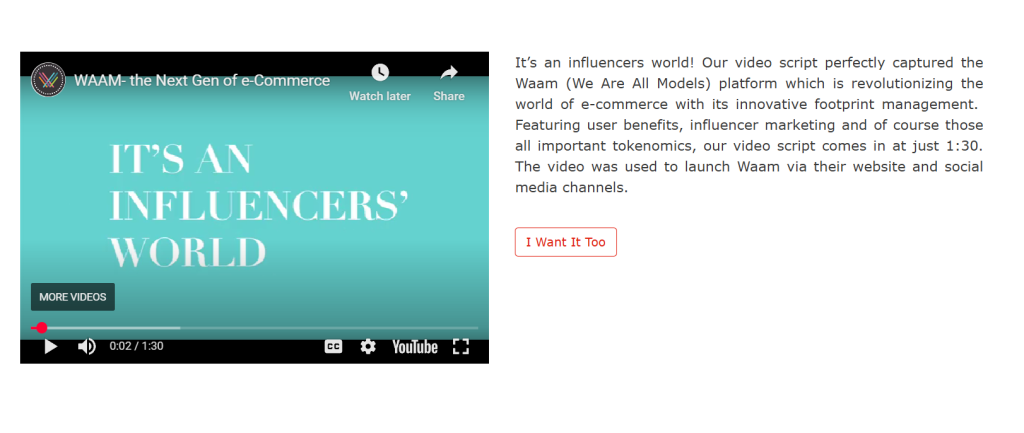Startups spend countless hours perfecting their product and business model. But they often overlook one of the most powerful tools in their fundraising arsenal, their content. While product and business model do matter, the reality is that professional investors will be researching in their own time. They’re scanning LinkedIn posts, website blogs, thought leadership, whitepapers, videos, and case studies to form opinions. This article explores how to write content for investors. We’ll also outline the essentials every startup should have in their investor marketing toolkit, supported by recent stats and expert insights.
Why Content Matters to Investors
Investor marketing has shifted. Today’s early-stage and growth investors expect more than a cold deck and a short email. They expect to see a startup’s digital footprint and narrative well-formed online. Credible, compelling content builds authority and attracts funding. A founder’s blog post on industry disruption, a case study showing product-market fit, or a short video explaining a business model. These are all breadcrumbs that lead investors to your door with higher confidence and interest.
What Kind of Content Persuades Investors?
Not all content is created equal. Investors look for signals of legitimacy, growth, and vision. They want to know you understand the market, your competitors, your audience, and that you have a compelling edge. Here are the forms of content for investors that consistently deliver those signals.
Thought Leadership and Expert Commentary
Publishing high-quality articles or LinkedIn posts that analyse industry trends, regulatory shifts, or future projections positions the founder as a visionary. When done authentically and backed by data, this content can attract strategic interest from investors who are actively watching the space.
82% of investors say “trust and credibility” in a company’s brand significantly influence their funding decisions.
Read more about earning trust in the finance space.
Use it: Include expert insights, data, certifications, and industry recognition in your content to build authority.
White Papers and Strategic Reports
A deeper dive into your product’s technology, your approach to a complex market, or your understanding of an industry pain point can differentiate your startup from competitors. White papers show that you’ve thought deeply about the space and have insights others may not.
People remember 65% of visual content three days later, compared to only 10% for written content alone.
Brain Rules by Dr. John Medina
Use it: Use graphs, infographics, and visuals in your whitepaper to explain your financials, projections, and growth potential.
Our team has produced whitepapers for today’s leading fintechs, props and forex brokers. Check out our portfolio.

Webinars and Industry Panels
Hosting or speaking on live sessions demonstrates leadership and attracts community. According to recent B2B marketing reports, 64% of marketers say webinars are one of the most effective forms of content for engagement. For investors, webinars offer a chance to assess a founder’s clarity, presence, and team dynamic in a more natural format.
Customer Case Studies and Success Stories
In the investor marketing space, nothing proves traction like a well-structured case study. This should include measurable outcomes like “reduced churn by 30% in six months” or “3x growth in ARR” and ideally properly sourced research. These real-world proofs of concept show that your product addresses challenges and delivers quantifiable value.
73% of investors say poorly written, unclear, or overly complex content turns them off from funding a startup.
TechCrunch + VC interviews
Use it: Write in clear, plain language. Focus on benefits, not buzzwords.
Short-form Video
Concise (1–3 minute) videos, whether a founder elevator pitch, customer testimonial, or product demo, can communicate energy, clarity, and purpose. Videos under two minutes get the most engagement, and for busy investors, this format can be the fastest way to understand a startup’s core story.
Investors are 22 times more likely to remember a story than a list of facts.
Stanford Graduate School of Business
Use it: Tell your brand or founder story, customer impact journey, or mission-driven narrative to connect emotionally.
Check out the short explainer we created for WAAM to launch and gain investment.

Social Proof and Advisor Endorsements
When influential advisors, industry figures, or early backers share or endorse your content, it boosts perceived credibility. This kind of social proof is powerful because it signals that others, especially those with experience, believe in your vision.
87% of investors are influenced by what other investors are doing or saying.
Forbes / AngelList surveys
Use it: Include press mentions, testimonials, investor endorsements, and traction metrics to build urgency and trust.
How to Make Your Content Persuasive
Writing for investors isn’t the same as writing for customers. You’re not trying to close a sale. You’re trying to build belief in your ability to scale, lead, and deliver returns. That requires a mix of psychology and strategy.
- Start with credibility. Use real numbers, link to reputable sources, and cite advisors or existing investors. Avoid overhyping or vague claims because investors see through that quickly. Establish an emotional connection through storytelling. Share your origin story, what motivates you, or the problem that keeps you up at night. Investors often back founders as much as they back products.
- Highlight traction early and often. Show proof of progress, even if it’s small. Whether it’s user growth, key hires, partnerships, or pilot results, concrete metrics matter. Create urgency by communicating market momentum or a competitive window.
- Keep it simple and digestible. Use clear headlines, break up long text with visuals, and avoid jargon unless it’s necessary. Investors don’t need a technical deep dive unless they ask for one. They need a crisp view of your opportunity, team, and traction.
Must-Have Tools in the Investor Marketing Toolkit
A startup doesn’t need a full-scale marketing department to engage investors effectively. But certain assets are non-negotiable.
Pitch Deck
Your pitch deck should be clear, visual, and concise, ideally 10 to 15 slides that tell a coherent story: problem, solution, market, traction, team, projections, and ask. According to Silicon Valley Bank, VCs spend an average of two to five minutes reviewing a deck, so every slide counts.
Executive One-Pager
Think of this as a visual summary of your business, ideal for cold outreach or follow-up emails. It should include key metrics, milestones, market size, and team overview, all in a clean, branded format.
Traction Showcase
This could be a case study, a visualised dashboard, or a simple slide that lays out key metrics and milestones. It’s your opportunity to show progress immediately.
Thought Leadership Content
Even one or two strong, data-backed blog posts can show that you’re thinking beyond the day-to-day grind. These should be published on your company site, Medium, or LinkedIn and promoted strategically.
Short Intro Video
A brief, founder-led video pitch creates a personal connection. Keep it authentic. This isn’t about perfect production, it’s about clarity and energy.
Investor Update Newsletter
Once you’ve engaged investors, keep them warm. A monthly email sharing KPIs, wins, product updates, and market insights keeps your story top-of-mind and builds long-term interest.
How Aggressive Should Your Marketing Be During Fundraising?
This is a common question with a nuanced answer. The most effective approach is targeted, confident, and consistent, rather than aggressive in the traditional sense.
Overhyping your startup or flooding every channel with announcements can backfire. Instead, focus on delivering smart, timely content to the right audiences. That includes sharing milestones on LinkedIn, publishing strategic blog posts, and sending tailored updates to investor lists. Consistency matters more than flash. A single great case study can be repurposed into blog content, video clips, social media posts, and investor emails. Quality beats quantity every time, especially when the audience is sophisticated and time-poor.
Allocate resources wisely. Budgeting 10% – 20% of your fundraising effort toward content creation, design, and distribution is typical. Speak to our team to create a manageable monthly budget for promoting your startup.
Need Investment For Your Startup?
The quickest route to getting investment is to give investors content they trust. Startups that invest in high-quality investor content build reputational equity that lasts beyond the funding round. By using content to showcase your vision, values, and traction, you create a narrative that investors want to be part of. Book a Zoom call with our team to discuss launching your startup.
